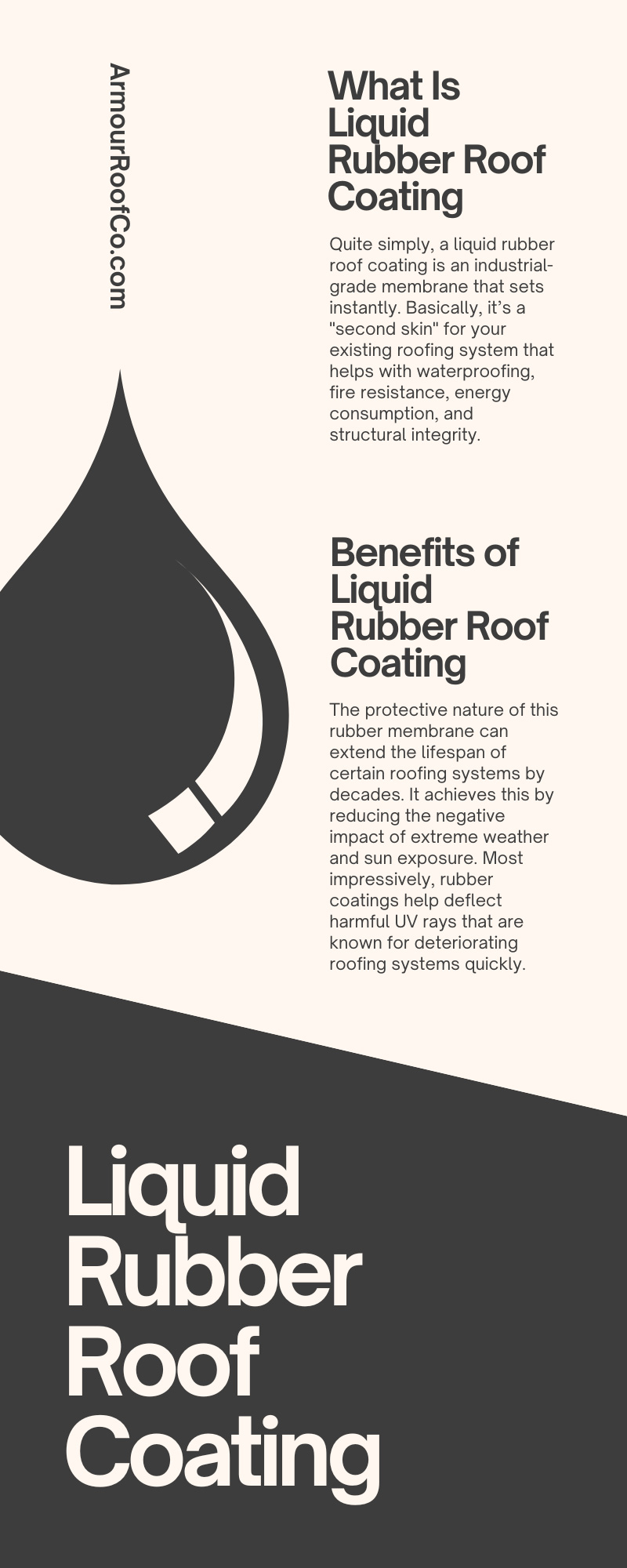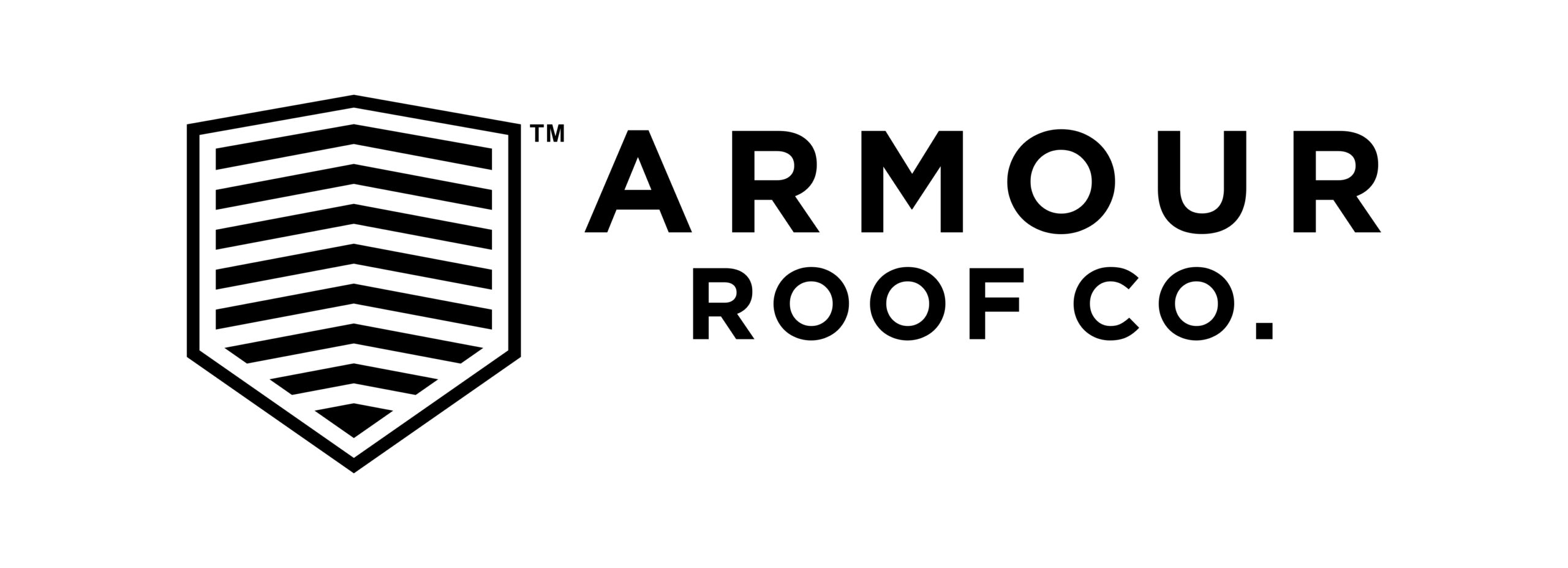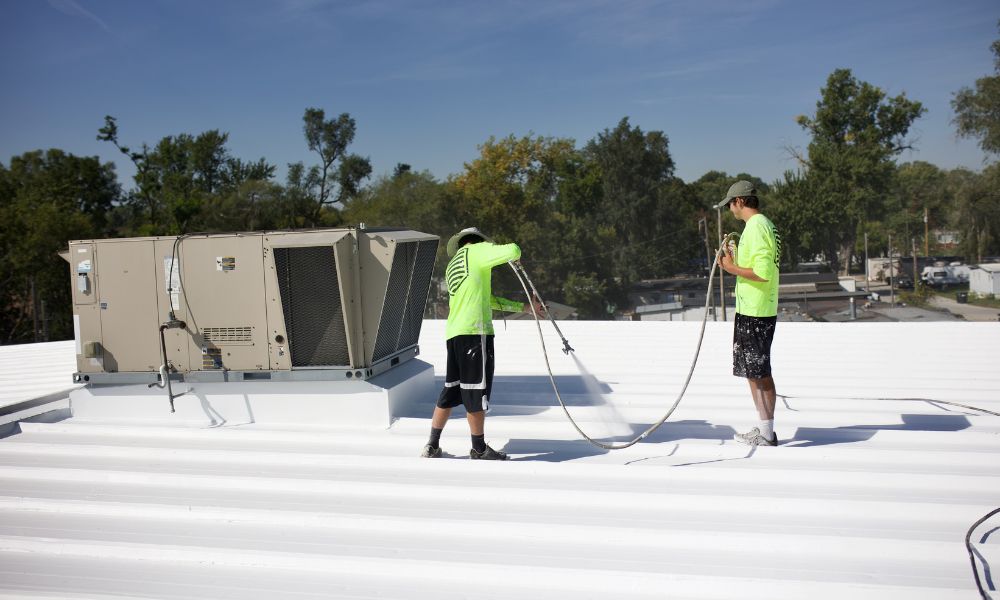Finding the perfect roofing solution for your commercial building is no easy task. The costs of installing a new roofing system can be significant, and there’s always the worry that you’ll need to conduct expensive repairs down the line. That’s why it’s so important to take extra measures and give your roof extra protection.
One of the best ways to reinforce the durability and longevity of your roof is by applying a liquid rubber roof coating. This quick and painless process provides many benefits to your roof and building overall. But before you peruse this option, read on to learn everything you need to know about protective coatings.
What Is Liquid Rubber Roof Coating
Quite simply, a liquid rubber roof coating is an industrial-grade membrane that sets instantly. Basically, it’s a “second skin” for your existing roofing system that helps with waterproofing, fire resistance, energy consumption, and structural integrity. At Armour Roof Co., we are the sole provider of this type of membrane roof coating in Omaha, Nebraska!
Widespread use of liquid rubber roof coatings wasn’t popularized until the early twentieth century—and even then, the cost of materials, lack of knowledge regarding proper installation, and limited supplies made this roofing solution underappreciated. It wasn’t until the 60s and 70s that materials such as silicone, polyurethanes, and acrylics were used in liquid rubber roof coatings, helping drive down the cost of resources and production.
Around that time in American culture, domestic manufacturing exploded, making liquid rubber roof coatings a well-used protective measure for both residential and commercial roofing systems. As more businesses began training their employees on proper installation methods, roof coatings became more affordable and successful, providing businesses and homeowners more value for their investment.
During the 2008 recession, new construction became less common and more expensive. As such, businesses resorted to liquid rubber roof coating restoration rather than new roofing system installation to save money and time. Since the rubber coating proved successful at reinforcing roof strength and longevity, and the installation cost was low, this process became and remains very common for commercial buildings.
Benefits of Liquid Rubber Roof Coating
There is no end to the benefits of liquid rubber roof coating. As stated before, the protective nature of this rubber membrane can extend the lifespan of certain roofing systems by decades. It achieves this by reducing the negative impact of extreme weather and sun exposure. Most impressively, rubber coatings help deflect harmful UV rays that are known for deteriorating roofing systems quickly.
But the most important benefit associated with liquid rubber roof coating is that it’s cost-effective. All aspects of rubber coating, from production to installation to even function, help reduce a business‘s operating costs. For one, adding a protective membrane layer can actually lower interior temperatures, saving a building thousands in yearly energy consumption costs. As an added bonus, reducing energy consumption helps negate the impact of climate change! And since this roof addition helps the environment, you can sometimes receive tax exemptions for installing liquid rubber coating.
Roofing System Applications
So, is your type of roofing system suitable for our liquid rubber roofing service? In short, yes! Liquid rubber membrane systems are totally applicable for any type of roofing system. However, the most ideal types are flat roofing systems, metal roofing systems, and EPDM (rubber) membrane roofing systems. Let’s explore how liquid rubber roof coating benefits these three roofing types, as well as additional roofing systems:
Modified Bitumen/BUR
Modified bitumen, a variation of “built-up roofing,” is an asphalt-based roofing system that’s highly popular for commercial applications. It’s most commonly used for low-slope/flat roofing and combines polymerized rubber and fiberglass to create a highly waterproofed and durable layer. However, modified bitumen roofing systems are susceptible to damaging UV rays, moisture, and heat-related damage. Applying liquid rubber roof coating to your modified bitumen roofing system helps reduce the likelihood of these damages and prevent cracks and leaks from occurring regularly.
Metal Roofing
Metal roofing solutions are extremely popular for larger buildings since it’s affordable, easy to install, and boasts an impressive lifespan. However, metal of any kind is very sensitive to weather conditions, especially rain, ice, and snow. After a few years of facing the elements, your metal roof will begin to show signs of wear and tear, including rusting and fracturing. A liquid rubber roof coating helps seal the metal material and prevent oxidation and other damage.
EPDM Singly-Ply Roofing
EPDM single-ply roofing, much like modified bitumen or BUR systems, is made from a rubber membrane. However, because an EPDM roofing solution can fit any roof shape, it’s able to be installed in one piece. The benefit here is that there are fewer chances of your roof suffering from joint and leakage problems. Applying liquid rubber roof coating to your EPDM single-ply roofing system helps reinforce the strength of your roof and greatly reduces the impact of weather and UV rays. Plus, it helps reduce roof punctures, which are more common with EPDM single-ply roofing systems.
It’s important to recognize that liquid rubber roof coating is entirely applicable to any type of roofing system. Even if your commercial roofing system isn’t listed above, you can still enjoy the benefits of installing a protective membrane layer. The versatility of liquid rubber roof coating makes it that much more popular for commercial roofing applications. Just ensure that applying a roof coating won’t void your roofing system’s warranty.
The Installation Process
What exactly does the application process of liquid rubber membrane systems look like?
- Our team conducts a thorough inspection of your roof.
- They clean it to eliminate any debris and impurities to ensure the application process is successful.
- They repair your roofing system’s substrate by sealing seams, roof perimeters, and protrusions. This step also helps increase the success of the adhesion process.
- Their final step involves spraying down the membrane layer. They carefully measure and evenly distribute our liquid rubber roof coating to ensure the surface is smooth and strong.
Now having learned everything there is to know about a liquid rubber roof coating, you’re ready to make the call and book professional application services for your commercial roofing system. Call us today at Armour Roof Co. and receive the very best roofing services in Omaha! Our friendly team will work with your specific needs to find the best process for your building.





